DXY was smashed Friday night. CNY was not much better. EUR lifted:
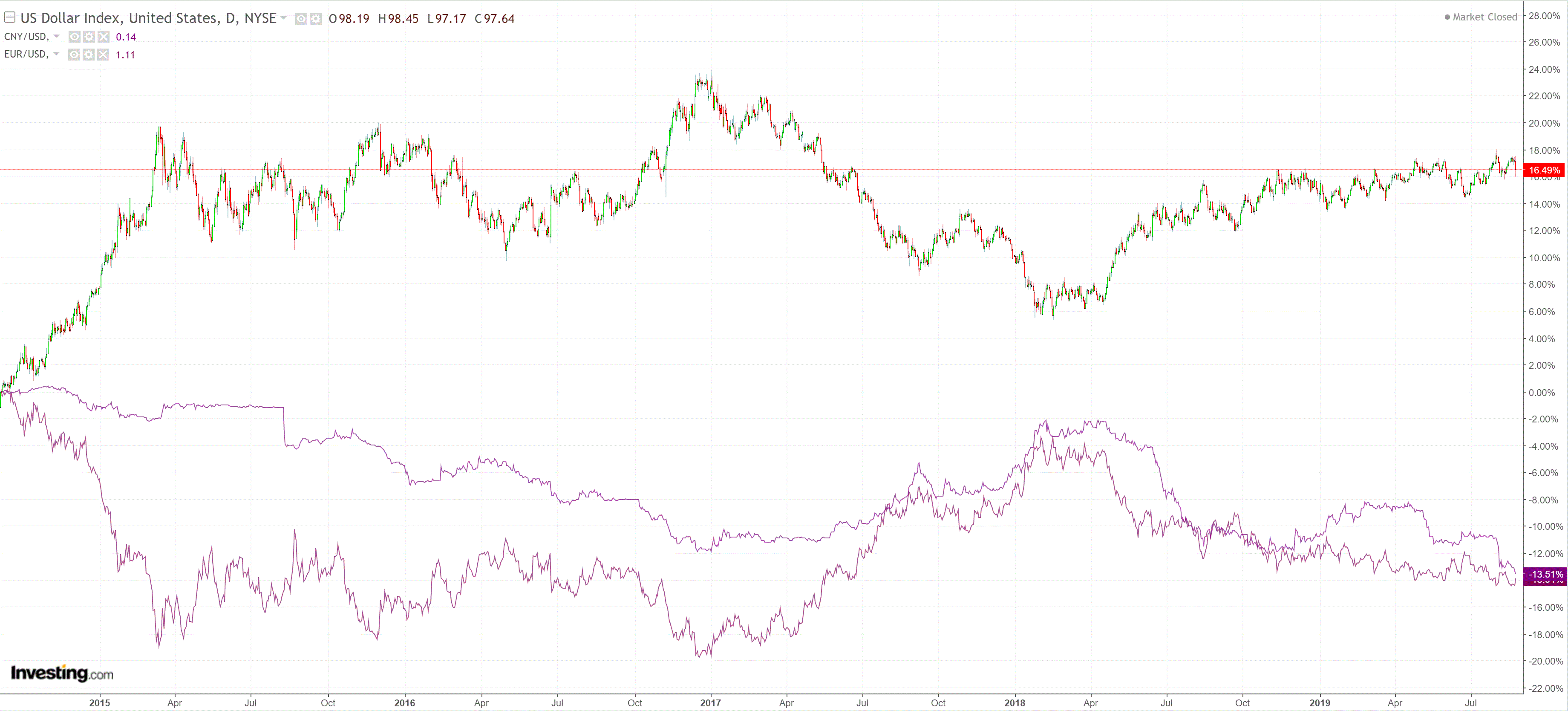
The Australian dollar was shredded against DMs:
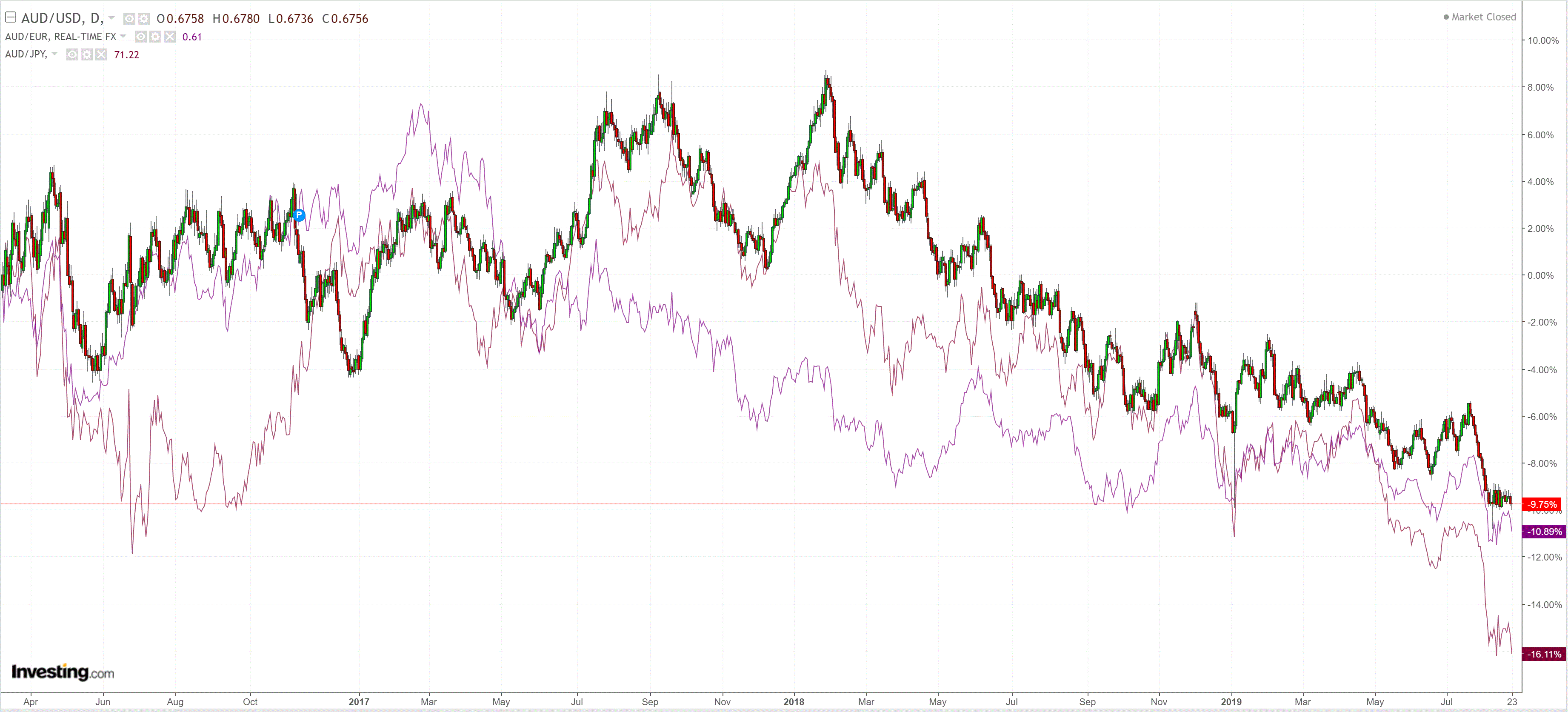
EMs were worse:
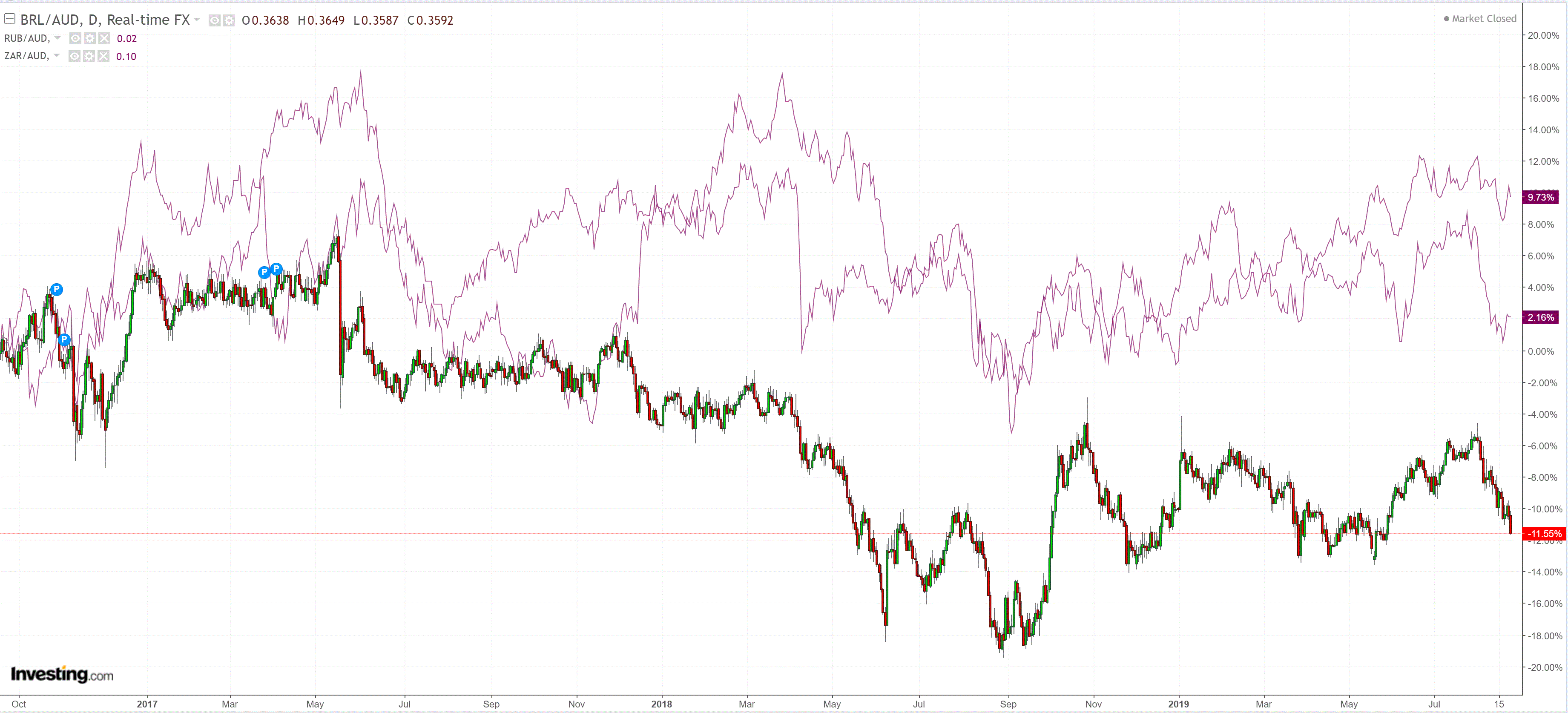
CFTC positioning was unchanged very short last week:
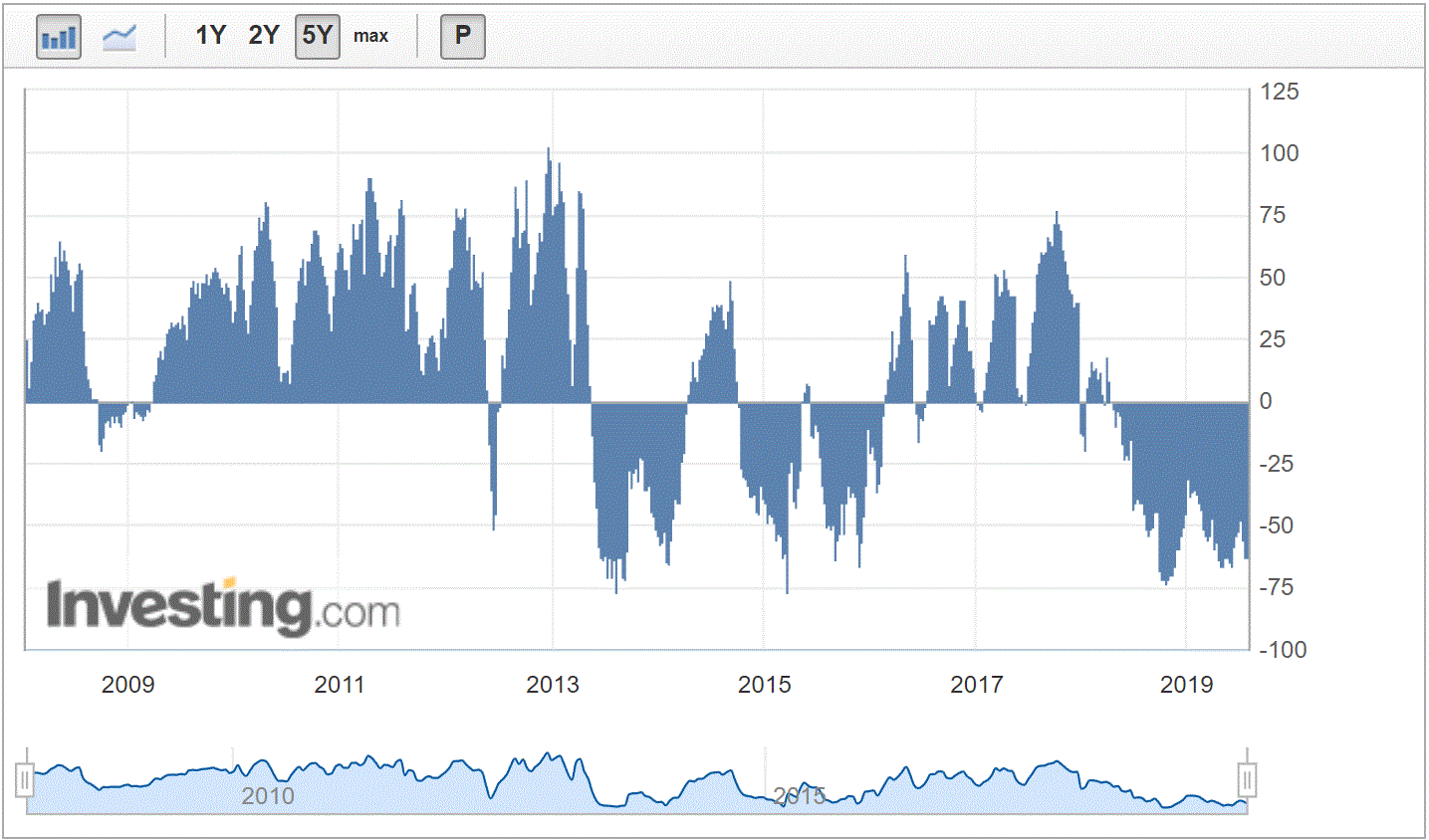
Gold hit a new closing high:
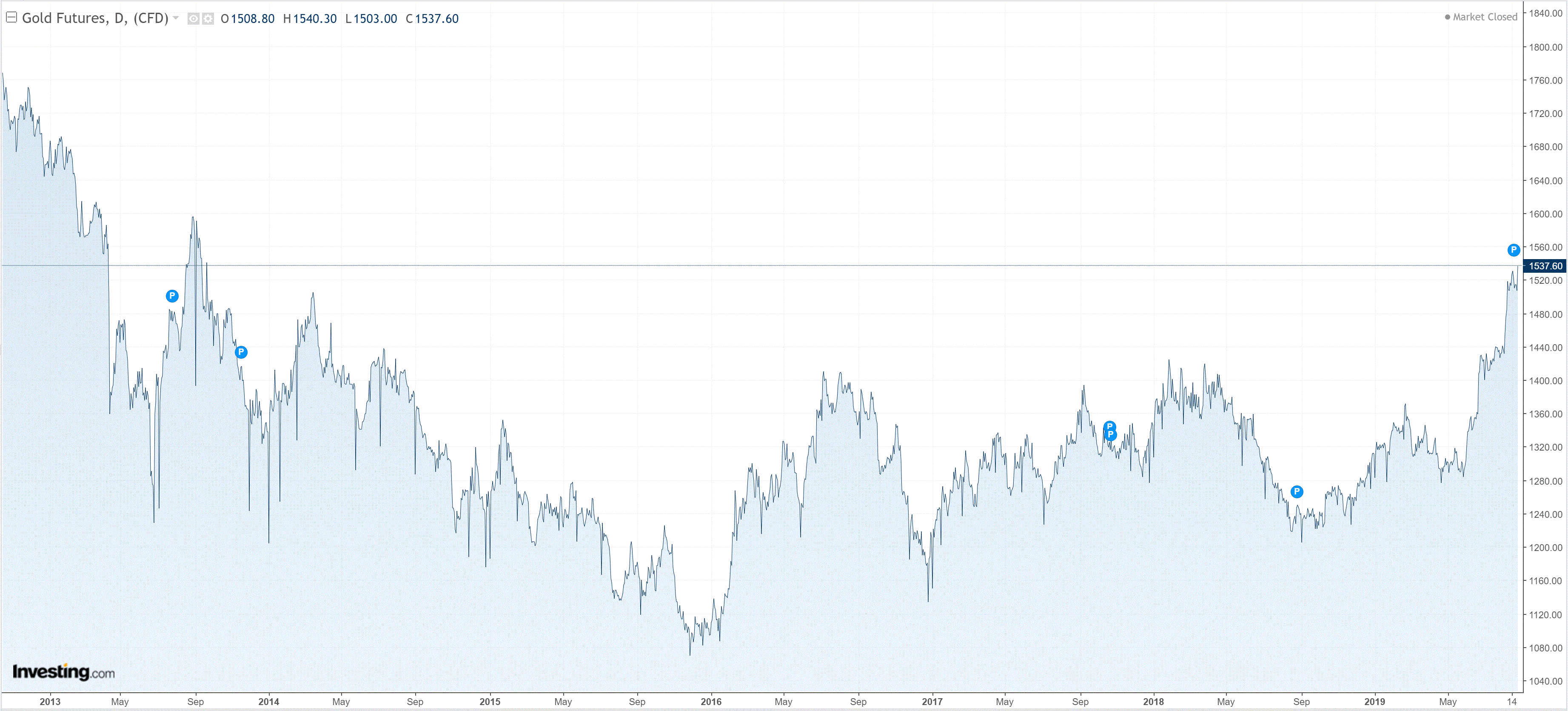
Oil was hit:
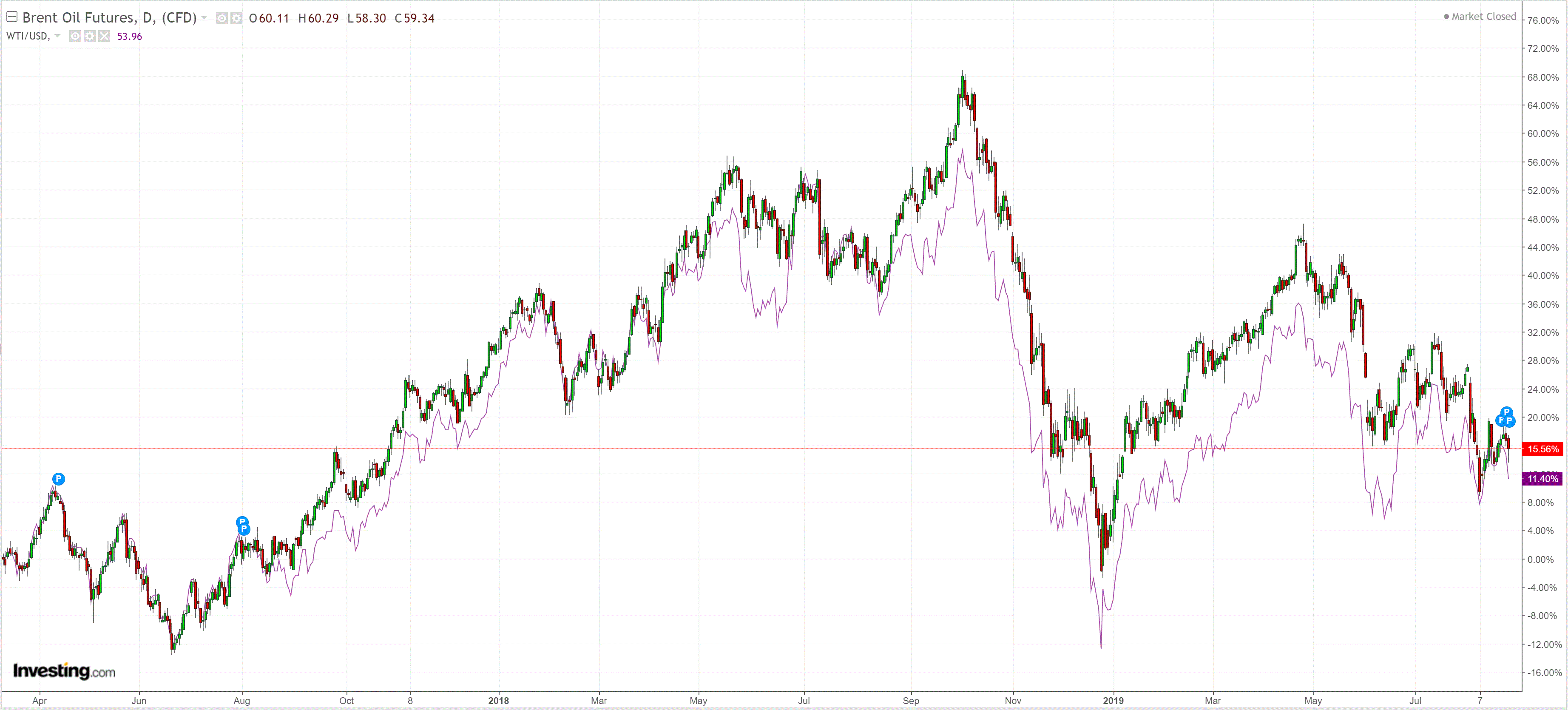
Copper broke:
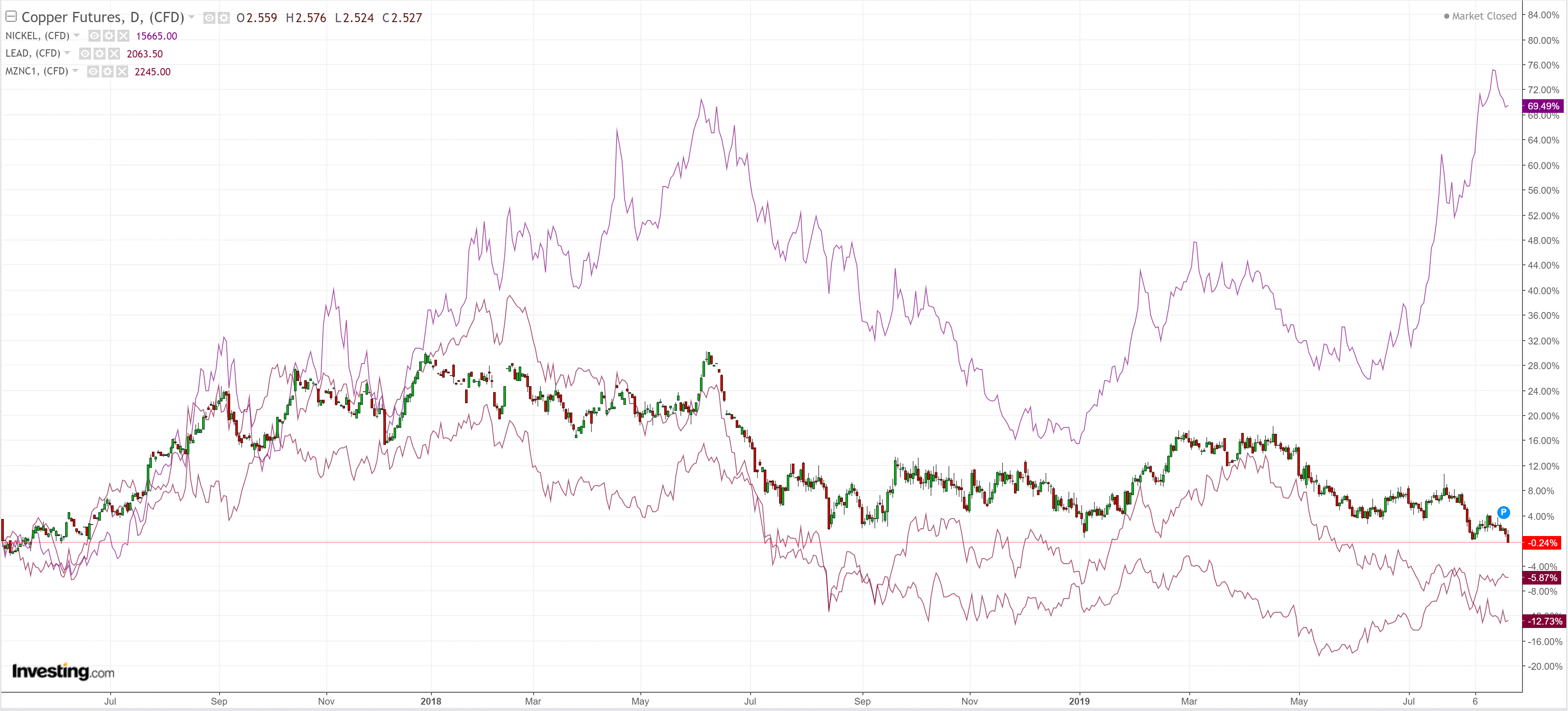
Big miners sank:
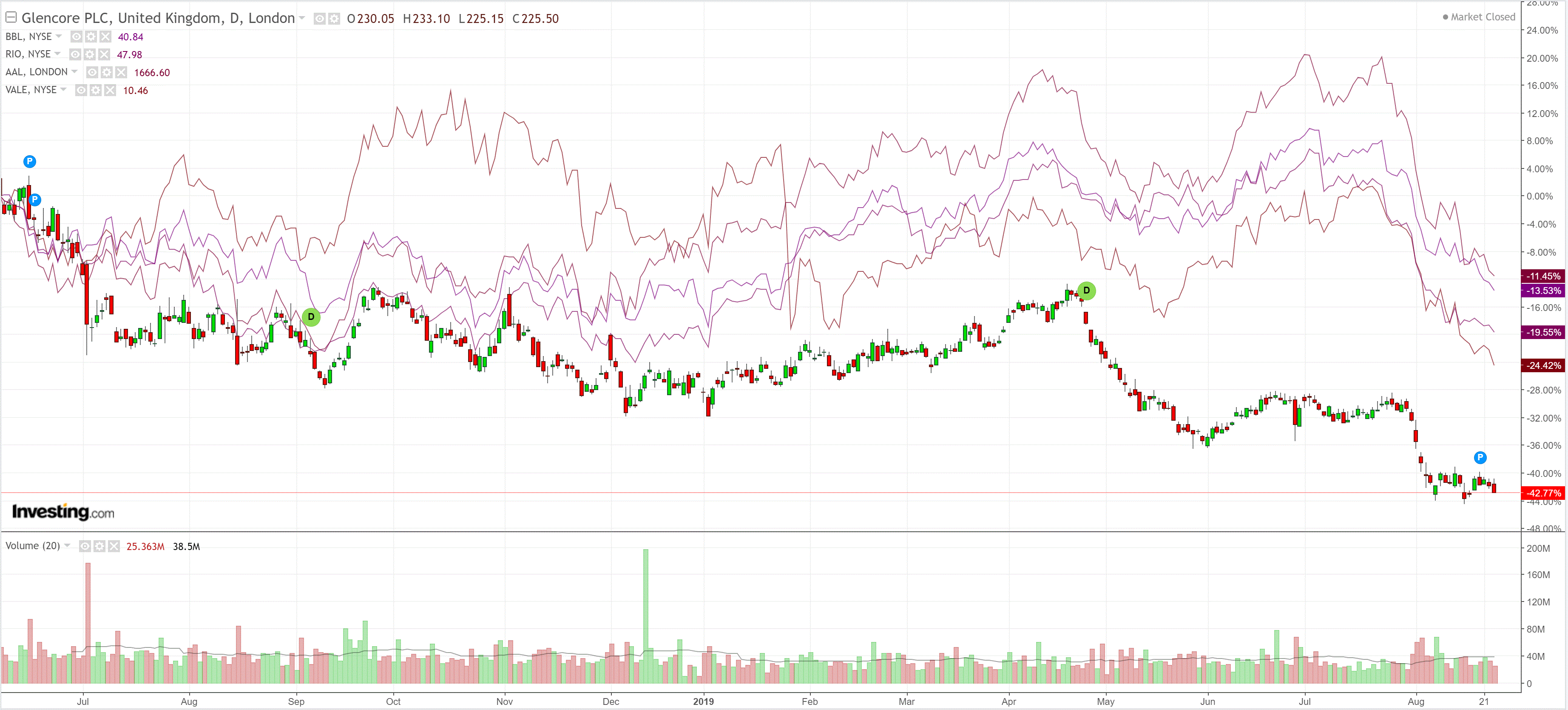
EM stocks too:
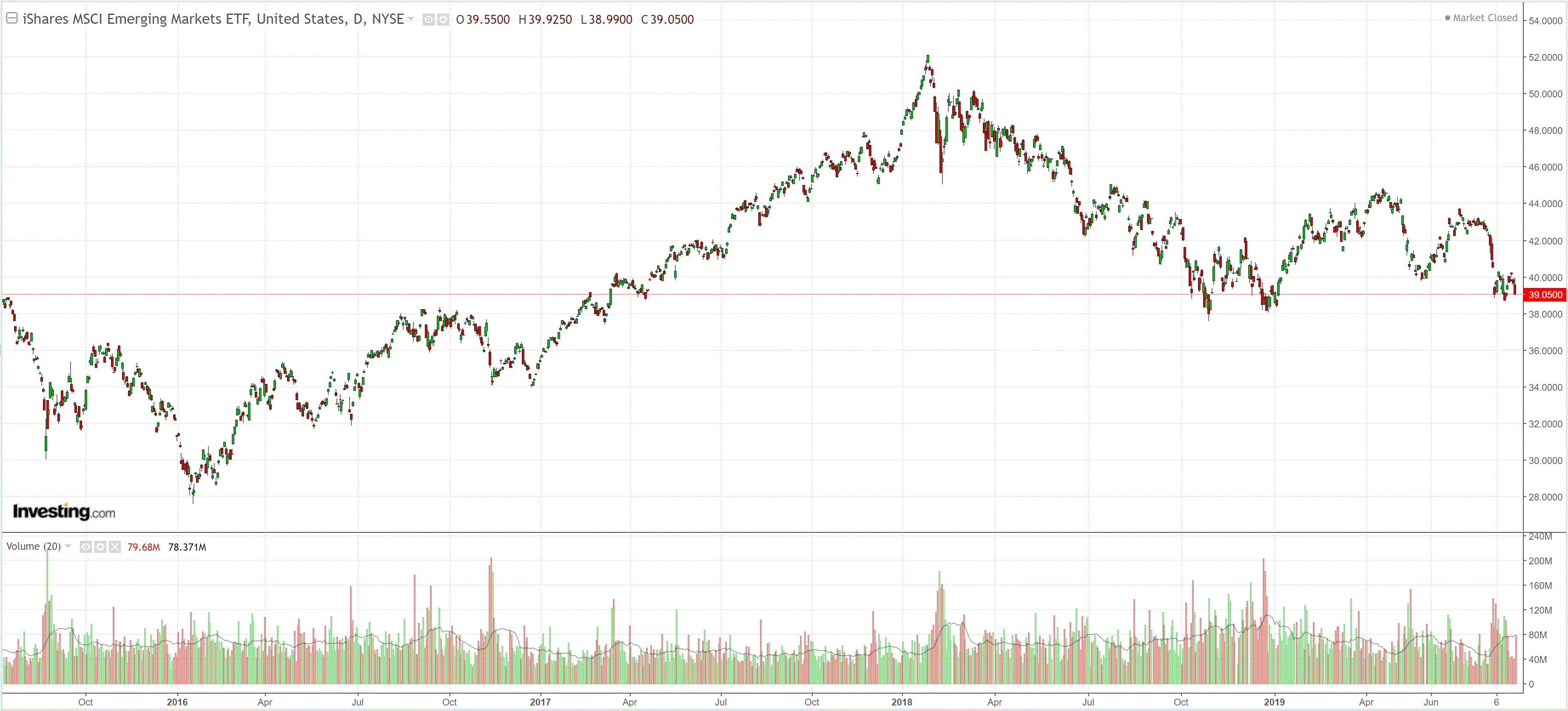
And junk:
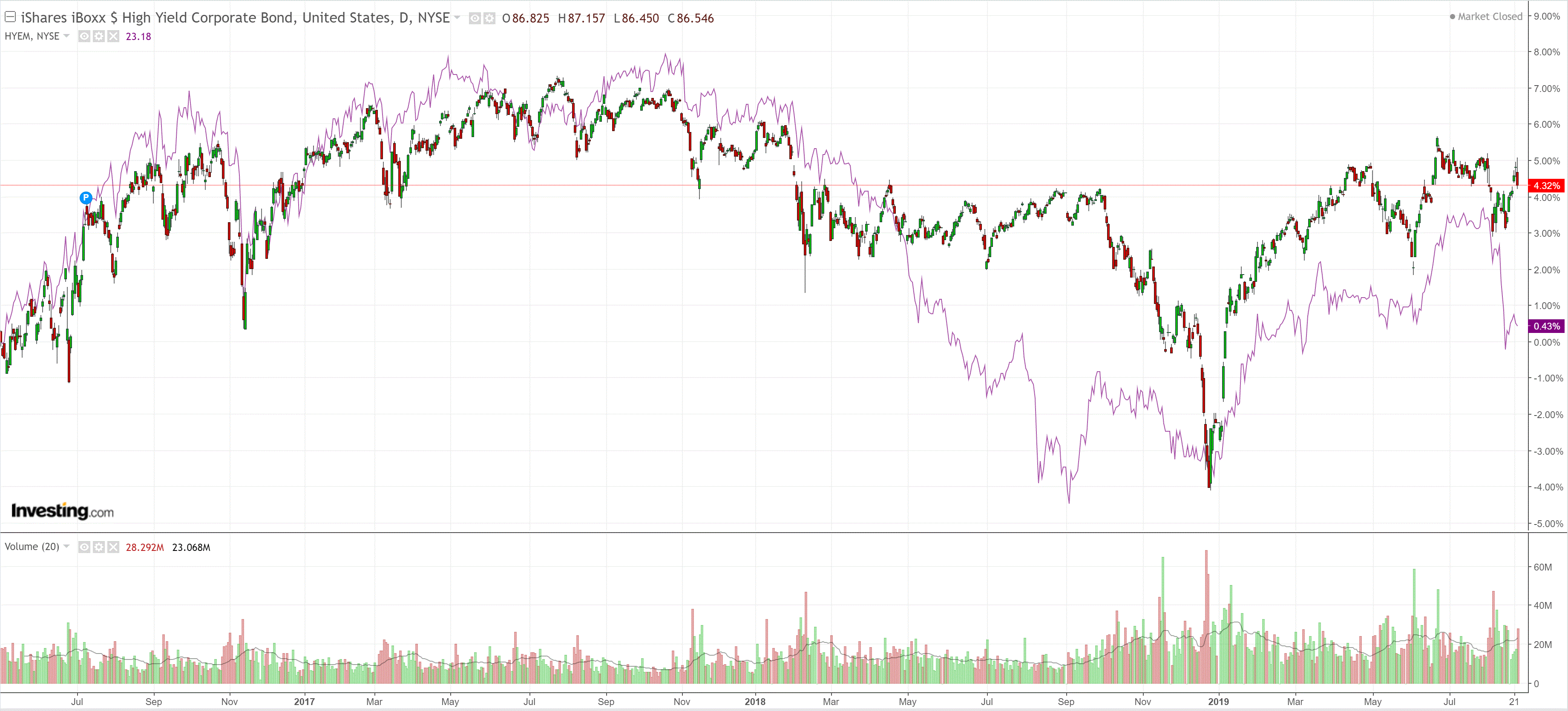
All bond were bid:
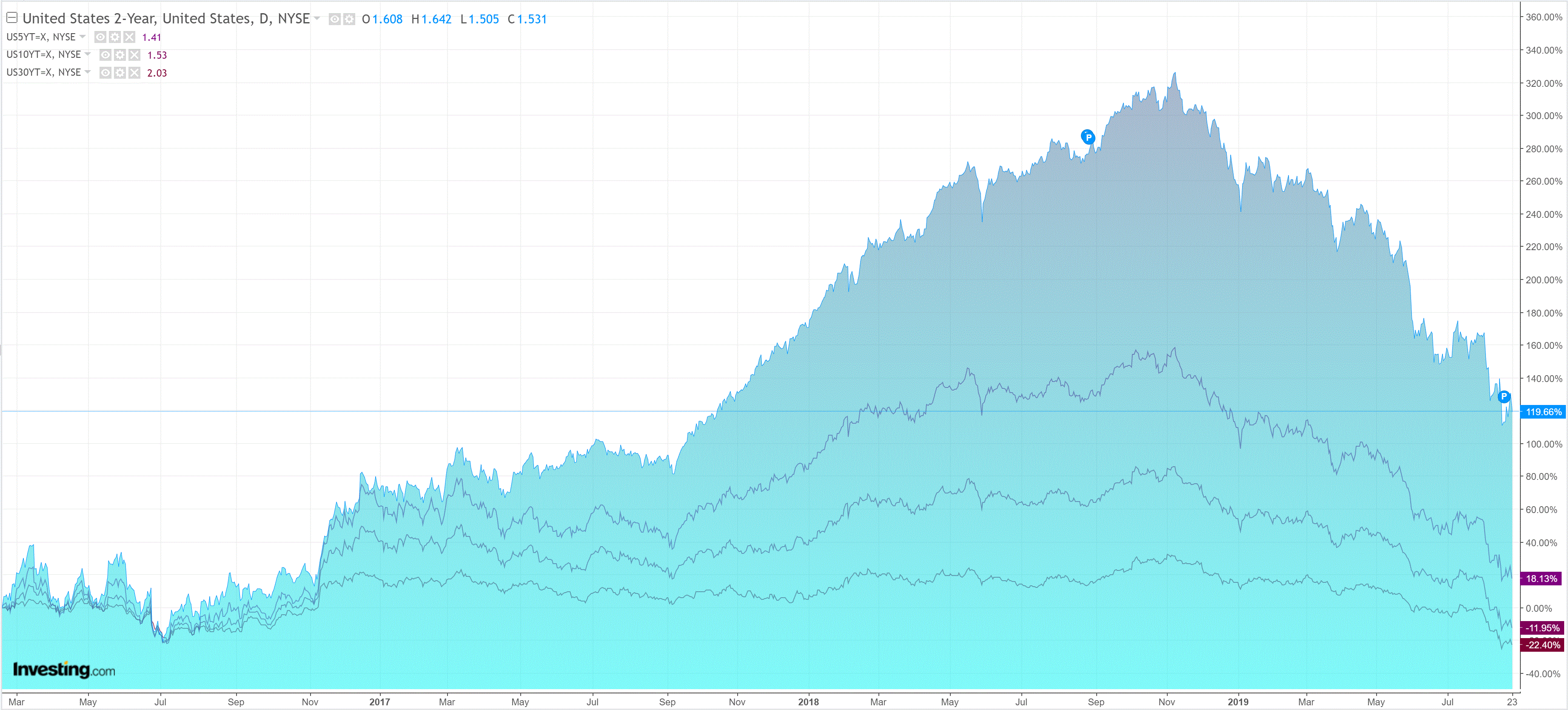
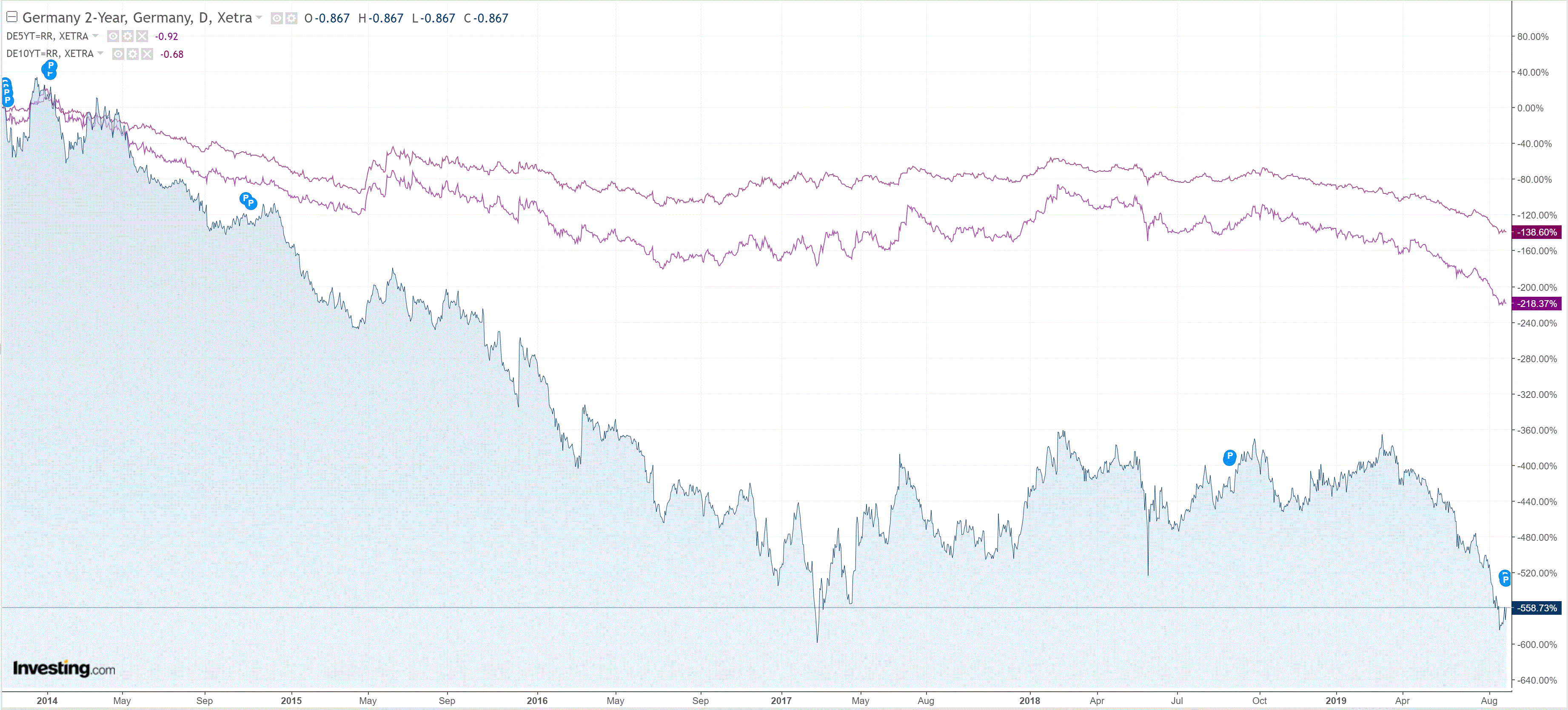
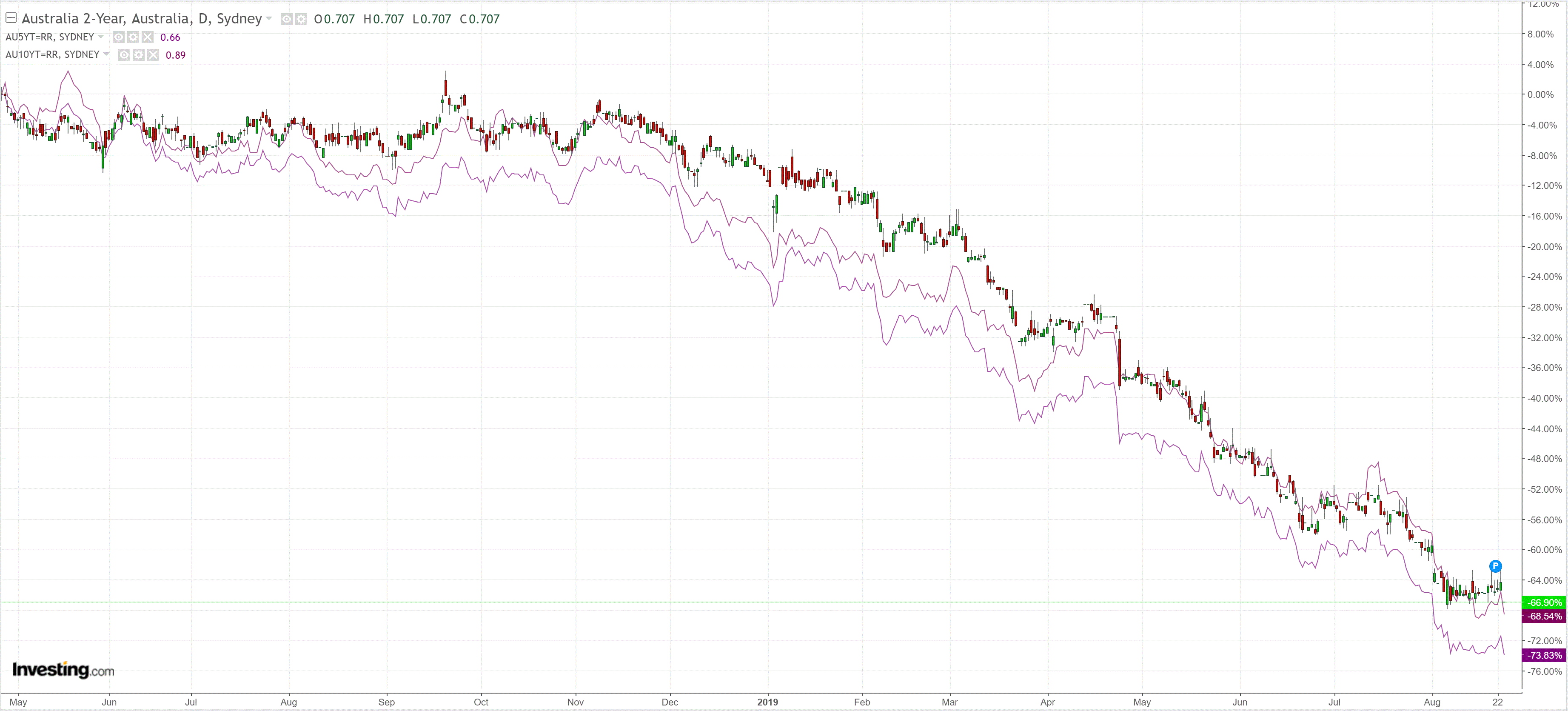
Stocks got creamed:
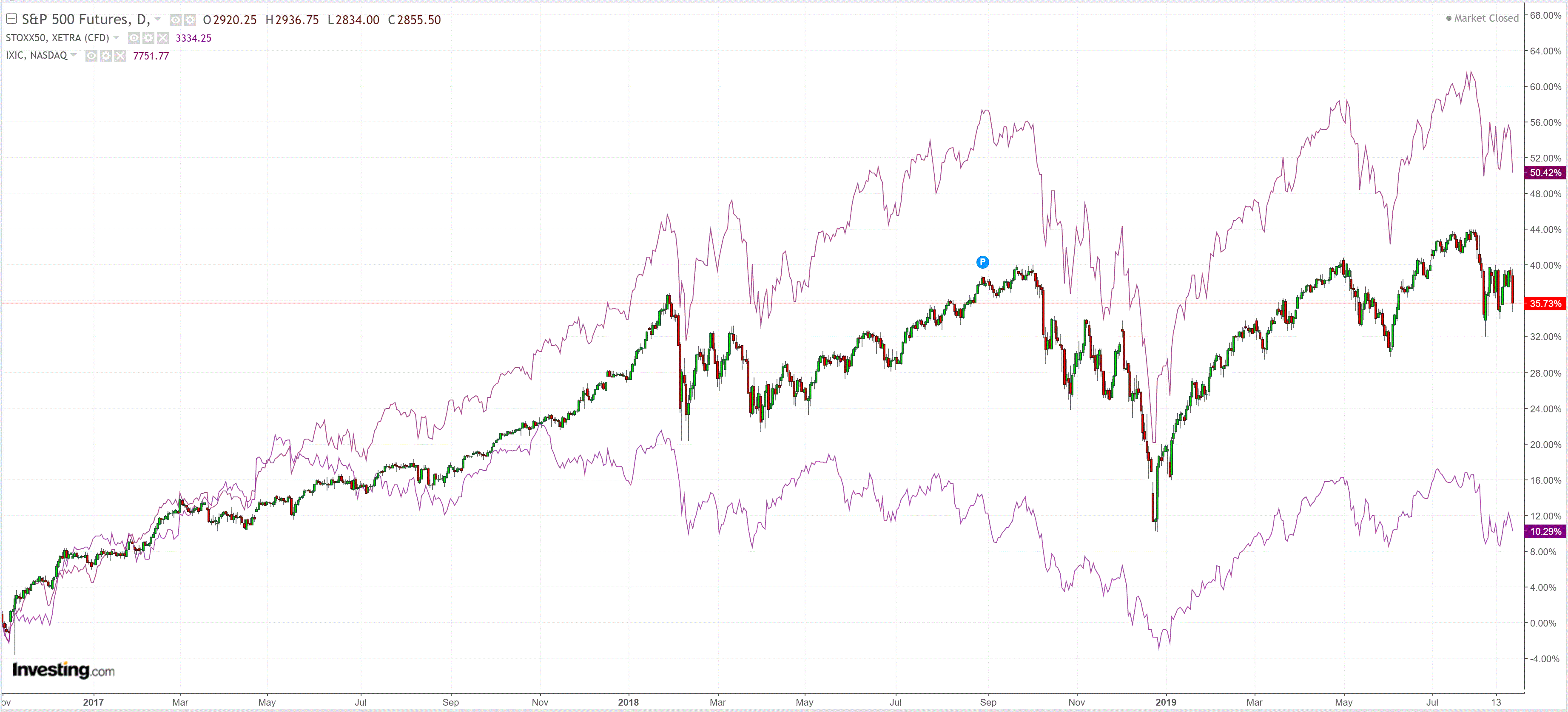
Chimerica is coming apart. China foolishly retaliated to Trump tariffs:
China said Friday it will impose new tariffs on $75 billion worth of U.S. goods and resume duties on American autos.
The Chinese State Council said it decided to slap tariffs ranging from 5% to 10% on $75 billion U.S. goods in two batches effective on Sept. 1 and Dec. 15. Those dates happens to be when President Donald Trump’s latest tariffs on Chinese goods are to take effect.
It also said a 25% tariff will be imposed on U.S. cars and a 5% on auto parts and components, which will go into effect on Dec.15. China had paused these tariffs in April.
And the rest is history as Trump immediately roared back:
Our Country has lost, stupidly, Trillions of Dollars with China over many years. They have stolen our Intellectual Property at a rate of Hundreds of Billions of Dollars a year, & they want to continue. I won’t let that happen! We don’t need China and, frankly, would be far….
— Donald J. Trump (@realDonaldTrump) August 23, 2019
….better off without them. The vast amounts of money made and stolen by China from the United States, year after year, for decades, will and must STOP. Our great American companies are hereby ordered to immediately start looking for an alternative to China, including bringing..
— Donald J. Trump (@realDonaldTrump) August 23, 2019
….your companies HOME and making your products in the USA. I will be responding to China’s Tariffs this afternoon. This is a GREAT opportunity for the United States. Also, I am ordering all carriers, including Fed Ex, Amazon, UPS and the Post Office, to SEARCH FOR & REFUSE,….
— Donald J. Trump (@realDonaldTrump) August 23, 2019
….all deliveries of Fentanyl from China (or anywhere else!). Fentanyl kills 100,000 Americans a year. President Xi said this would stop – it didn’t. Our Economy, because of our gains in the last 2 1/2 years, is MUCH larger than that of China. We will keep it that way!
— Donald J. Trump (@realDonaldTrump) August 23, 2019
Then, after markets closed, Trump doubled down.
For many years China (and many other countries) has been taking advantage of the United States on Trade, Intellectual Property Theft, and much more. Our Country has been losing HUNDREDS OF BILLIONS OF DOLLARS a year to China, with no end in sight….
— Donald J. Trump (@realDonaldTrump) August 23, 2019
…unfair Trading Relationship. China should not have put new Tariffs on 75 BILLION DOLLARS of United States product (politically motivated!). Starting on October 1st, the 250 BILLION DOLLARS of goods and products from China, currently being taxed at 25%, will be taxed at 30%…
— Donald J. Trump (@realDonaldTrump) August 23, 2019
…Additionally, the remaining 300 BILLION DOLLARS of goods and products from China, that was being taxed from September 1st at 10%, will now be taxed at 15%. Thank you for your attention to this matter!
— Donald J. Trump (@realDonaldTrump) August 23, 2019
And later again:
For all of the Fake News Reporters that don’t have a clue as to what the law is relative to Presidential powers, China, etc., try looking at the Emergency Economic Powers Act of 1977. Case closed!
— Donald J. Trump (@realDonaldTrump) August 24, 2019
This means only one thing, one way or another. Global supply chains forced out of China. It won’t happen overnight but it will happen. China is going ex-growth before our very eyes. Brace for a major economic adjustment in Australia over the next five years.
The forex market response was to smash both CNY and DXY, as well shred the AUD. But the latter would have fallen a LOT more against the USD if it had not fallen a full cent.
Markets appear to fear that Trump’s next move will be in the forex market, to weaken the USD. But that was before he hiked tariffs after market so expect the USD to rebound today and the AUD to get pulverised.
Is Trump forex intervention a real fear? The truth is there is not much he can actually do short of taxing capital inflows, especially Chinese. He might go that way but the fear of losing an international stock and bond bid will most likely prevent it. Then again, if the blood really gets up who knows? Gold is the obvious hedge.
It is more likely that the global economy will simply crack up under the sustained pressure of Chimerica coming apart. As global growth slows, oil demand falls, prices crater, US junk bond spreads blow out, stocks crash, the Federal Reserve is forced to slash and burn, and Trump gets his lower USD that way eventually.
Fed chair Powell was cautious but is turning the oil tanker slowly that way:
Through the FOMC’s setting of the federal funds rate target range and our communications about the likely path forward for policy and the economy, we seek to influence broader financial conditions to promote maximum employment and price stability. In forming judgments about the appropriate stance of policy, the Committee digests a broad range of data and other information to assess the current state of the economy, the most likely outlook for the future, and meaningful risks to that outlook. Because the most important effects of monetary policy are felt with uncertain lags of a year or more, the Committee must attempt to look through what may be passing developments and focus on things that seem likely to affect the outlook over time or that pose a material risk of doing so. Risk management enters our decision making because of both the uncertainty about the effects of recent developments and the uncertainty we face regarding structural aspects of the economy, including the natural rate of unemployment and the neutral rate of interest. It will at times be appropriate for us to tilt policy one way or the other because of prominent risks. Finally, we have a responsibility to explain what we are doing and why we are doing it so the American people and their elected representatives in Congress can provide oversight and hold us accountable.
We have much experience in addressing typical macroeconomic developments under this framework. But fitting trade policy uncertainty into this framework is a new challenge. Setting trade policy is the business of Congress and the Administration, not that of the Fed. Our assignment is to use monetary policy to foster our statutory goals. In principle, anything that affects the outlook for employment and inflation could also affect the appropriate stance of monetary policy, and that could include uncertainty about trade policy. There are, however, no recent precedents to guide any policy response to the current situation. Moreover, while monetary policy is a powerful tool that works to support consumer spending, business investment, and public confidence, it cannot provide a settled rulebook for international trade. We can, however, try to look through what may be passing events, focus on how trade developments are affecting the outlook, and adjust policy to promote our objectives.
This approach is illustrated by the way incoming data have shaped the likely path of policy this year. The outlook for the U.S. economy since the start of the year has continued to be a favorable one. Business investment and manufacturing have weakened, but solid job growth and rising wages have been driving robust consumption and supporting moderate growth overall.
As the year has progressed, we have been monitoring three factors that are weighing on this favorable outlook: slowing global growth, trade policy uncertainty, and muted inflation. The global growth outlook has been deteriorating since the middle of last year. Trade policy uncertainty seems to be playing a role in the global slowdown and in weak manufacturing and capital spending in the United States. Inflation fell below our objective at the start of the year. It appears to be moving back up closer to our symmetric 2 percent objective, but there are concerns about a more prolonged shortfall.
Committee participants have generally reacted to these developments and the risks they pose by shifting down their projections of the appropriate federal funds rate path. Along with July’s rate cut, the shifts in the anticipated path of policy have eased financial conditions and help explain why the outlook for inflation and employment remains largely favorable.
Turning to the current context, we are carefully watching developments as we assess their implications for the U.S. outlook and the path of monetary policy. The three weeks since our July FOMC meeting have been eventful, beginning with the announcement of new tariffs on imports from China. We have seen further evidence of a global slowdown, notably in Germany and China. Geopolitical events have been much in the news, including the growing possibility of a hard Brexit, rising tensions in Hong Kong, and the dissolution of the Italian government. Financial markets have reacted strongly to this complex, turbulent picture. Equity markets have been volatile. Long-term bond rates around the world have moved down sharply to near post-crisis lows. Meanwhile, the U.S. economy has continued to perform well overall, driven by consumer spending. Job creation has slowed from last year’s pace but is still above overall labor force growth. Inflation seems to be moving up closer to 2 percent. Based on our assessment of the implications of these developments, we will act as appropriate to sustain the expansion, with a strong labor market and inflation near its symmetric 2 percent objective.
In the end, the odds still favour a safe haven bid into the USD as things fall apart. But even without it, the sundering of Chimera is the sundering of Australia, and the Australian dollar will be destroyed regardless.

